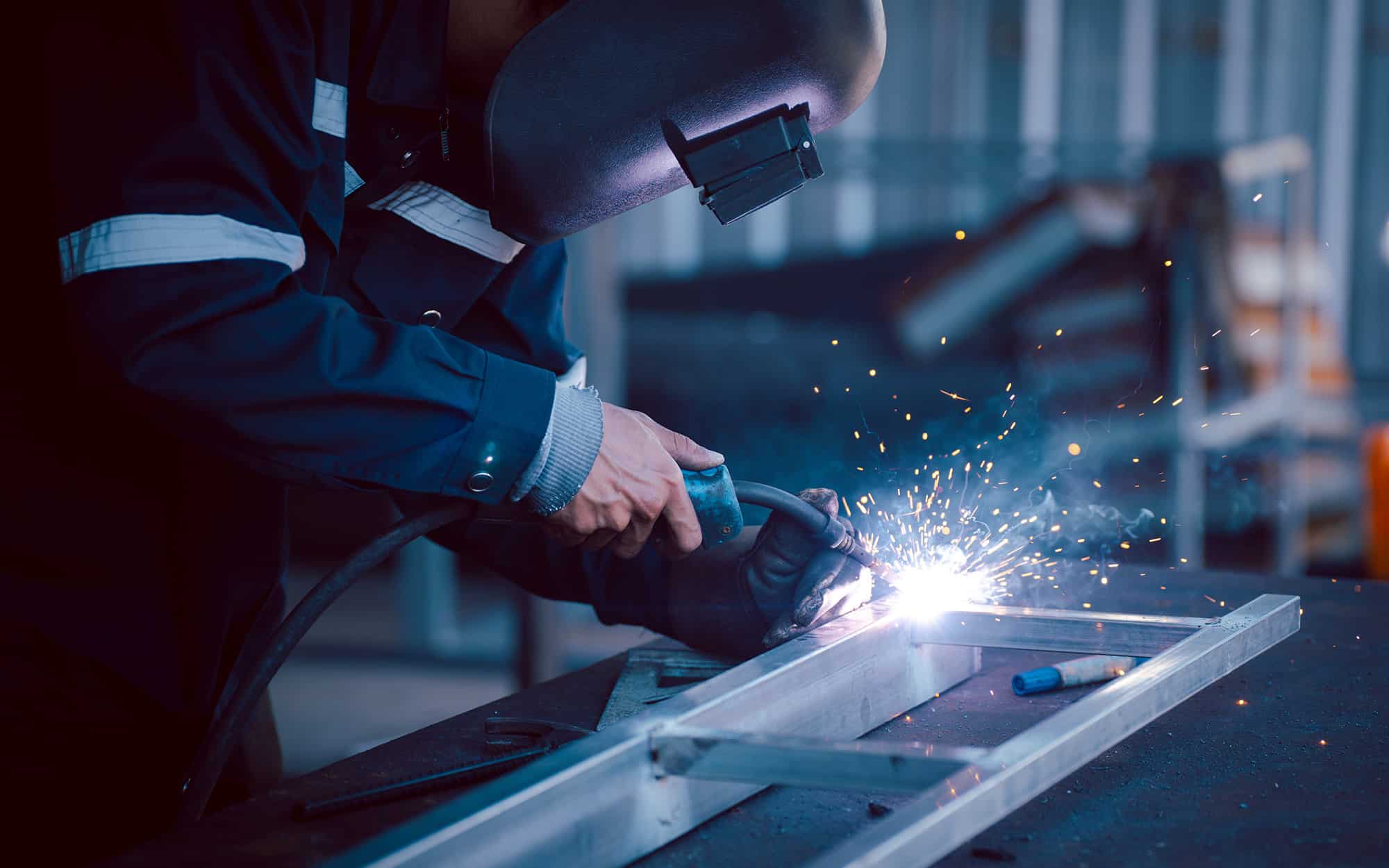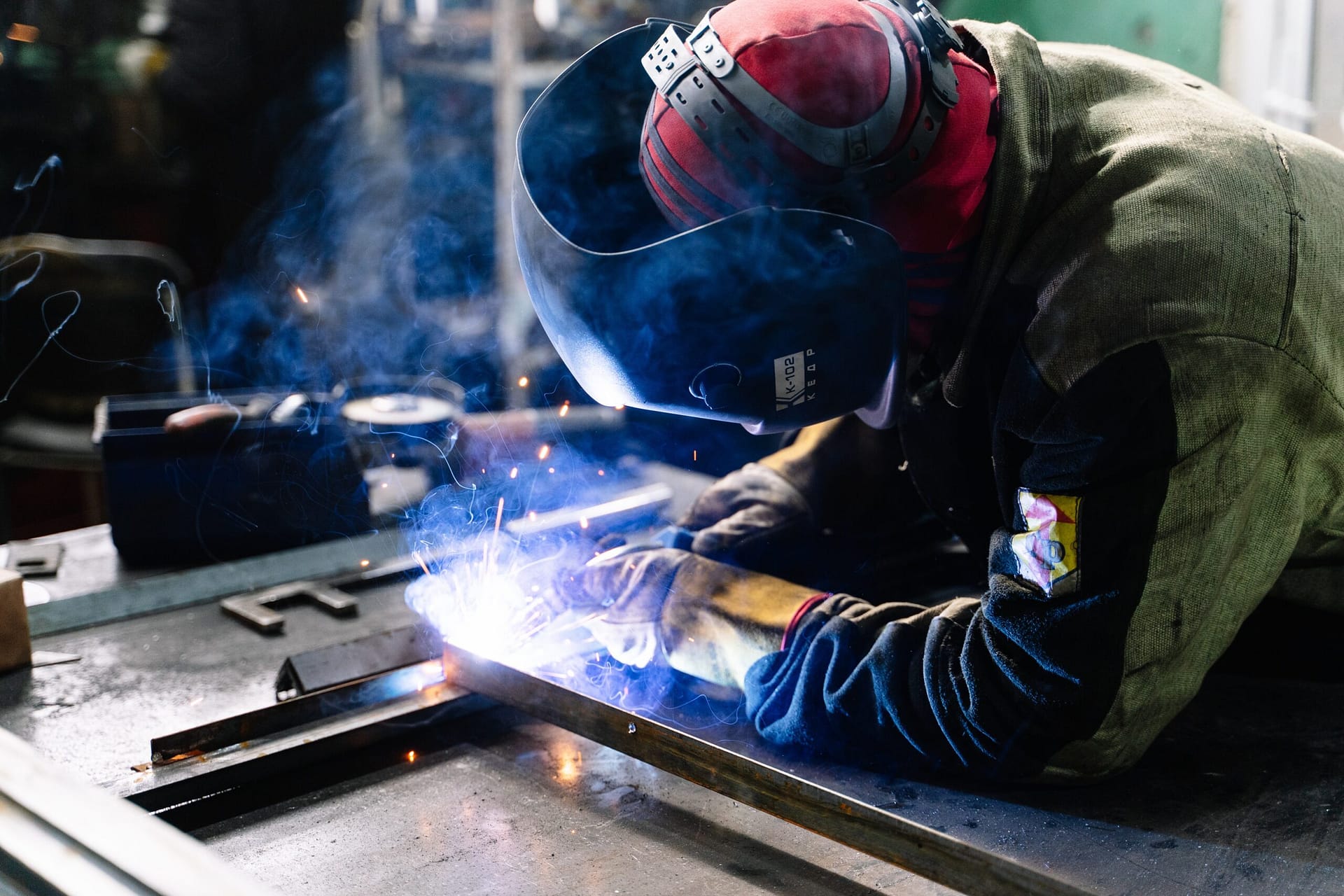All About Welding: Key Insights Into Techniques and Finest Practices for Success
Welding encompasses a range of strategies, each fit for certain materials and applications. Recognizing these methods, such as GMAW, SMAW, and TIG, is vital for accomplishing excellent results. Furthermore, the appropriate equipment and security methods can not be forgotten. As prep work and troubleshooting play crucial roles in the welding procedure, grasping these components can significantly boost the quality of the final product. What are the crucial aspects that guarantee a successful weld?
Understanding Different Welding Methods
Welding techniques include a variety of techniques, each matched to particular applications and products. Among one of the most typical methods are Gas Metal Arc Welding (GMAW), Protected Metal Arc Welding (SMAW), and Tungsten Inert Gas Welding (TIG) GMAW, additionally called MIG welding, is prominent for its speed and flexibility, making it suitable for slim products. SMAW, or stick welding, is preferred for its simplicity and effectiveness in outdoor atmospheres, particularly with thicker steels. TIG welding provides precision and control, making it ideal for complex job and non-ferrous metals (Montana Mobile Welding and Repair Fabrication). Each method has its one-of-a-kind advantages and considerations, permitting welders to pick the most effective method based upon the task's needs, material type, and preferred outcomes. Understanding these methods is vital for successful welding
Vital Welding Equipment and Tools
While different welding techniques need details skills, the right tools and tools are similarly necessary for achieving high quality results. Important welding equipment consists of welding devices, which differ relying on the strategy-- such as MIG, TIG, or stick welding. Protective gear, including aprons, handwear covers, and safety helmets, warranties safety and security and comfort during the process. Additionally, fixtures and clamps aid secure products in location, making certain accuracy in welds. Consumables like welding rods, wire, and shielding gas are also critical parts that affect the top quality of the weld. In addition, tools such as cutters and grinders help with surface preparation and post-weld ending up, contributing to a specialist outcome. Spending in premium tools inevitably boosts the performance and efficiency of welding tasks.
Safety Practices in Welding
Appropriate safety and security techniques are important in the welding industry to secure employees from possible threats. Welders must use suitable personal protective tools (PPE), consisting of headgears with proper shading, handwear covers, and flame-resistant clothes. Sufficient air flow is important to reduce exposure to harmful fumes and gases generated during the welding procedure. Furthermore, employees need to be trained in the proper handling of welding devices to stop mishaps. Fire safety procedures, such as maintaining combustible materials far from the welding area and having fire extinguishers conveniently offered, are necessary. Routine inspections of devices and workspaces can assist determine possible hazards before they cause mishaps. By sticking to these safety practices, welders can develop a more secure working atmosphere and decrease threats related to their profession.
Readying Products for Welding
Preparing products for welding is a crucial step that significantly influences the quality and stability of the last item (Montana Mobile Welding and Repair Belgrade Welding). Proper preparation involves cleaning the surfaces to get rid of impurities such as rust, oil, and dirt, which can compromise the weld. Methods such as grinding, fining sand, or using solvents are frequently employed to achieve a tidy surface. Furthermore, making sure that the products mesh comfortably is essential; spaces can bring about weak welds. It's additionally vital to consider the placement and positioning of the components, as this will certainly influence the simplicity of welding and the final result. Finally, picking the ideal filler material and guaranteeing compatibility with the base metals is crucial for attaining solid, resilient welds
Tips for Achieving High-Quality Welds
Accomplishing high-grade welds needs focus to detail and adherence to finest methods throughout the welding process. Correct joint prep work is important, guaranteeing surface areas are clean and totally free from pollutants. Choosing the suitable filler material and welding method based upon the base steels is crucial for perfect bonding. Preserving constant traveling speed and angle while welding can advertise and avoid defects uniformity. Additionally, managing heat input is crucial; excessive heat can bring about bending and compromised joints. If essential, routinely examining the welds during the process permits for instant modifications. Utilizing suitable post-weld therapies, such as cleansing and tension alleviation, can boost the sturdiness and honesty of the weld, inevitably guaranteeing an effective end result.
Fixing Usual Welding Issues
Welding frequently provides obstacles that can influence the high quality and stability of the end product. Usual issues such as porosity, irregular weld grains, and getting too hot can occur, each calling for particular fixing techniques. Recognizing these troubles is important for welders to enhance their skills and attain optimal results.
Porosity Troubles Clarified
Porosity can commonly be ignored, it remains an essential issue in welding that can jeopardize the integrity of a finished item. Porosity refers to the existence of tiny gas pockets within the weld bead, which can lead and compromise the joint to early failing. This issue typically emerges from contaminants, wetness, or incorrect securing gas coverage throughout the welding procedure. To alleviate porosity, welders must validate that the base materials are clean and dry, use ideal protecting gases, and keep consistent welding specifications. Consistently checking the devices and setting can also aid determine possible issues prior to they materialize in the weld. Dealing with porosity effectively is vital for have a peek at this site accomplishing solid, durable welds that meet top quality standards.

Irregular Weld Beans
Inconsistent weld beads can significantly impact the top quality and strength of a completed product. Numerous elements add to this problem, including improper travel speed, wrong amperage settings, and inconsistent electrode angles. When the welder moves as well promptly, a bead might show up narrow and do not have infiltration, while moving also gradually can trigger extreme build-up. Additionally, using the wrong amperage can result in either undercutting or too much spatter, both of which concession weld stability. The welder's method, such as irregular lantern activity, can additionally cause uneven bead appearance. To alleviate these problems, welders should concentrate on maintaining steady, regulated motions and ensuring correct equipment settings to achieve uniformity in their welds. Consistency is essential to attaining reliable and strong welds.
Overheating and Bending Issues
Excessive warmth during the welding process can result in considerable overheating and warping concerns, influencing the structural honesty of the work surface. These issues frequently show up as distortion, which can compromise alignment and fit-up, making further assembly challenging. Factors adding to overheating consist of the option of welding criteria, such as voltage and travel rate, as well as the sort of product being bonded. To alleviate these issues, welders must maintain consistent travel speed and suitable warm input while checking the work surface temperature. Furthermore, preheating or post-weld heat treatment can aid relieve tensions created by quick cooling - Montana Mobile Welding and Repair Belgrade. Normal inspection and adherence to best practices are necessary in preventing overheating and ensuring the durability and integrity of bonded structures
Regularly Asked Questions
What Are the Job Opportunities in the Welding Market?
The welding industry offers varied occupation possibilities, including settings as welders, designers, examiners, and instructors. Experts can operate in production, building, aerospace, and automotive industries, gaining from solid need and affordable salaries in different duties.
Just How Can I Enhance My Welding Speed Without Compromising Top Quality?
To improve welding speed without sacrificing top quality, one need to exercise reliable techniques, maintain tools, optimize setups, and improve hand-eye sychronisation. Routine training and seeking comments can also considerably contribute to attaining quicker, premium welds.
What Accreditations Are Offered for Welders?
Numerous accreditations exist for welders, consisting of those from the American Welding Society (AWS), the National Center for Construction Education And Learning and Study (NCCER), and various industry-specific organizations. These qualifications improve employability and demonstrate skill efficiency.
How Does Welding Impact the Qualities of Metals?
Welding influences the properties of steels by modifying their microstructure, which can cause changes in strength, ductility, and solidity. Warmth input and cooling rates throughout the procedure Continue considerably impact these material qualities.
Can I Bonded Dissimilar Metals Together?
